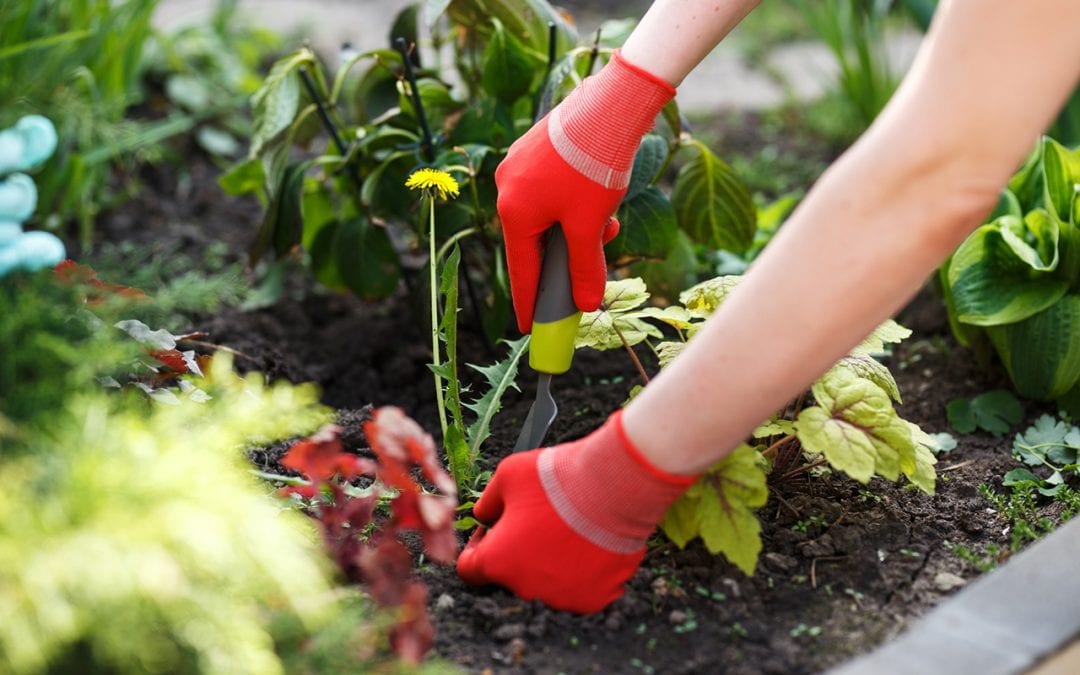Even the most beautiful home won’t attract any attention if it’s surrounded by a field of weeds. Weeds can easily get out of hand and make your yard look messy and unkempt. Follow these easy steps for weed control throughout the warm months.
Figure Out What You’re Up Against
When we think of weeds, broadleaf perennial varieties usually come to mind first. Some examples include dandelions, Creeping Charlie, and clover. These go dormant during the winter and reemerge in the spring. There are also annual grasses such as crabgrass and foxtail, which reseed themselves at the end of every season so they can germinate and grow the next season. Your weed control method will depend on which type of weed you have.
Kill Perennial Plants by Hand or with Herbicide
Dandelions and other perennials develop extensive underground root systems, so be thorough when you’re pulling weeds by hand. Dandelions have a large taproot, and you’ll need to dig down and uproot the entire plant to prevent it from growing back. Just pulling the leaves and flowers above ground will not have a lasting impact.
If you have more than a few weeds, you may want to rely on herbicide. Certain herbicides are formulated to kill just broadleaf plants and not grass, so using a brand like Weed-B-Gon will be your best bet. Follow directions on the bottle carefully, as most herbicides need to be diluted with water and used with a pressure sprayer.
Kill Annual Grasses with Fertilizer
You can fertilize your lawn and control weeds at the same time. Buy a fertilizer that includes crabgrass preventer, and fertilize in the spring before the crabgrass germinates for the upcoming summer season. The ideal time to fertilize is just before rainfall. The rain will help the herbicide soak into the soil. If the herbicide misses any spots, the fertilizer helps thicken the turf so crabgrass has trouble growing.
Go Natural
If you don’t like the idea of using herbicides, you can mix your own natural weed killing formula at home. If your lawn is truly overwhelmed with weeds, this may not be the best solution. For small outbreaks, however, you may be able to get by with this simple mixture of vinegar, salt, and dish soap:
Use Mulch
If your landscaping includes a garden, flowerbeds, or other non-grassy areas, mulch is the best natural tool to combat weeds. Mulch keeps the ground cool and prevents sunlight from penetrating the soil and helping weeds grow. Two inches is a good depth for mulch. Organic mulches, in particular, can provide a good home for crickets and small beetles that will feed on weed seeds, providing further weed control.
Weed Control Starts with a Healthy Lawn
A healthy lawn with thick, even grass is the best antidote to weed growth. If you keep a regular mowing and watering schedule and fertilize selectively, your grass will thrive and there simply won’t be enough room in the soil for weeds to flourish. For extra weed control, raise the height of your lawnmower – taller grass shades the soil, making it harder for weeds to grow.
Don’t let weeds take over your lawn and drain your time. If you keep to a consistent schedule of lawn maintenance and follow the steps above, you will reduce the time you spend tackling weeds and get more joy and relaxation from the summer months.
Greater Tampa Home Inspections provides home inspections services including Wind Mitigation Inspections and 4-Point Inspections. Contact us to schedule any of our services.

